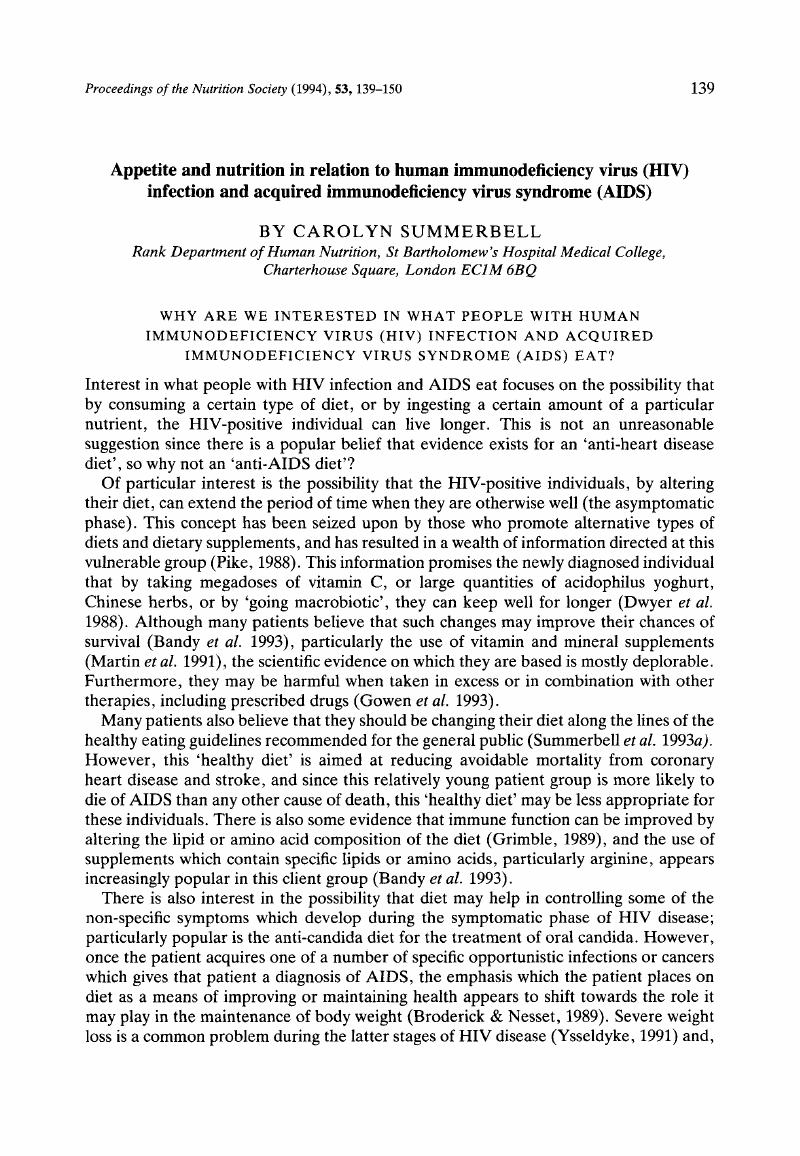Crossref Citations
This article has been cited by the following publications. This list is generated based on data provided by Crossref.
Karlsson, Anette
and
Nordström, Gun
2001.
Nutritional status, symptoms experienced and general state of health in HIV‐infected patients.
Journal of Clinical Nursing,
Vol. 10,
Issue. 5,
p.
609.
Nnyepi, Ms.
2009.
The risk of developing malnutrition in people living with HIV/AIDS: Observations from six support groups in Botswana.
South African Journal of Clinical Nutrition,
Vol. 22,
Issue. 2,
p.
89.
Tafese, Zelalem
Birhan, Yifru
and
Abebe, Hiwot
2013.
Nutritional care and support among adults living with HIV at Hawassa Referral Hospital, southern Ethiopia: A qualitative study.
African Journal of AIDS Research,
Vol. 12,
Issue. 2,
p.
105.



